Amazon Review Analysis: From Names & Meta Info to Sentiment Analysis
Amazon review analysis is an invaluable advantage that AI and machine learning have given to businesses. Amazon and online shopping are synonymous with each other, more so because the platform has given a chance for companies with modest resources to grow larger than they could through brick and mortar shops. A person can publish his own book through Amazon and not go through the anxiety of convincing a publisher to do so. A small company in a remote part of the world can set up an account on Amazon and sell to customers around the globe.
Because of its popularity and ubiquity, Amazon is really the place where people actually spend time and write detailed reviews, unlike other platforms where consumers have to be nudged. Amazon review data analysis can tell companies a lot about their product, even elements that they might not have thought of, as the example we will be analyzing later will demonstrate.
How Is Sentiment Analysis using Amazon Product Review Data Done?
A sentiment analysis API uses natural language processing (NLP) tasks to not only identify aspects of the products from the Amazon reviews but also enable brands to look beyond star ratings. Amazon review data analysis can give insightful customer information that can be harnessed for product betterment. For this example, we choose to analyze a popular protein powder that has a lot of comments and reviews on Amazon, with Repustate IQ, the all-in-one sentiment analysis platform for customer experience.
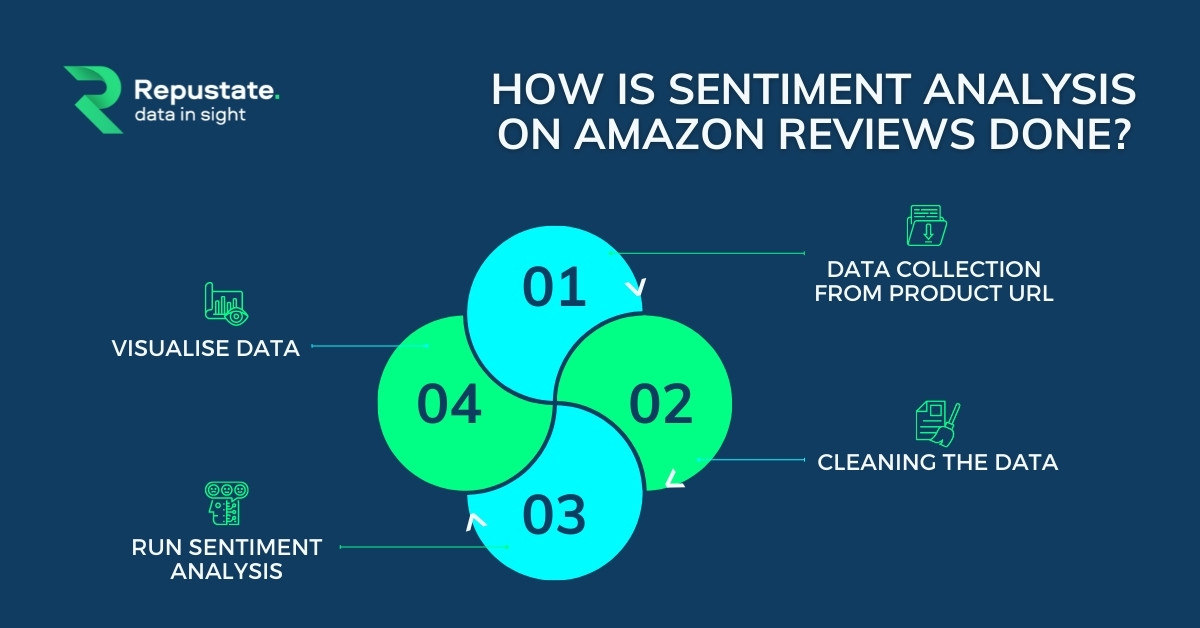
Step 1: Create project & Insert URL
To begin with, we created a project. We then fetched the data from the URL we wanted from Amazon reviews and uploaded it on the sentiment analysis platform.
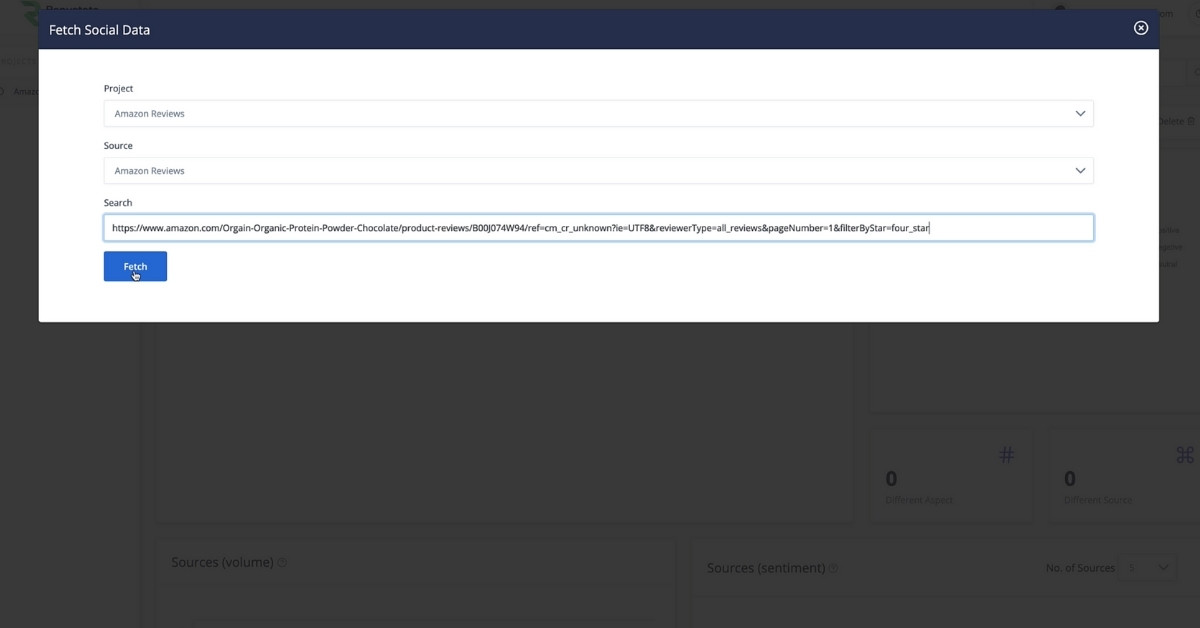
Step 2: Sentiment Analysis
After the API fetched the data, it analyzed it so we could see if the machine learning based sentiment analysis gave the same inputs as the reviews that customers left on the website.
The analysis of the review showed a 77% positive sentiment in tune with what the product received on Amazon. This was intriguing because the star rating of the product showed a higher positive sentiment as more than 80% of the reviews were positive. This is the kind of accurate data you need for genuine product and consumer insights.
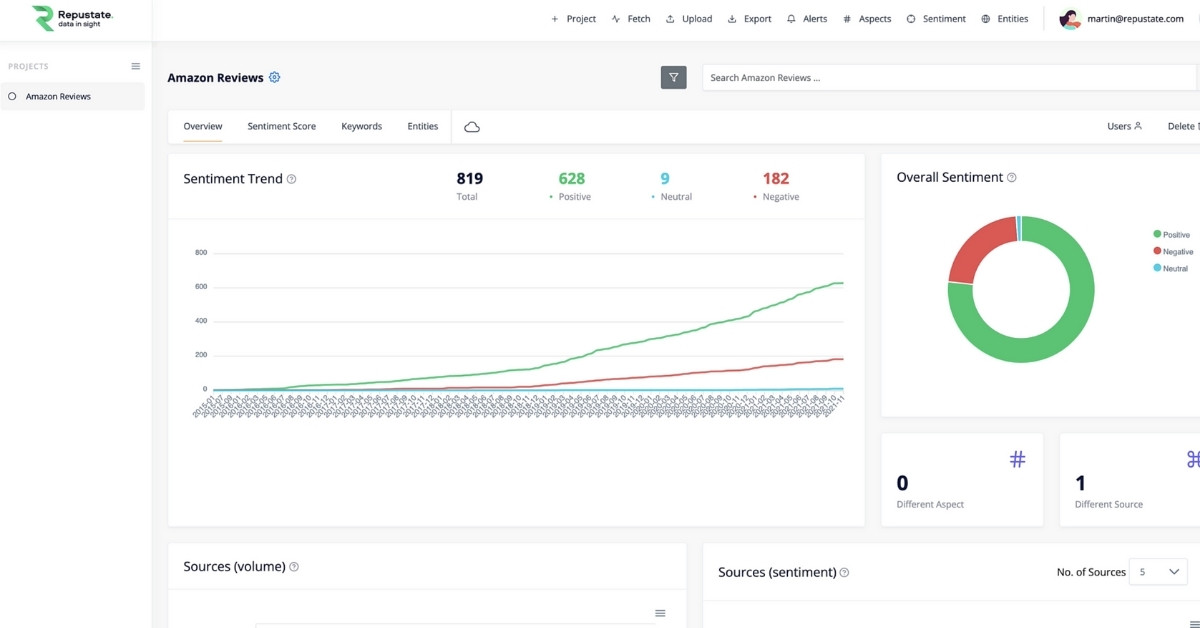
Step 3: Amazon review analysis
We further scrutinized the reviews to analyze the qualitative sentiment beyond the numerical star rating given. Here, Amazon review data analysis showed that comments mentioned under a 4-star review had many negative mentions of the product. This is why Repustate IQ processed those comments for their actual worth in the context of sentiment, going beyond numerical data.

Step 4: Visualize the data
All the sentiment insights are presented on the customer experience dashboard with utmost detail. You can see the different aspects that the API extracted and their related emotions. The platform also allows you to see the actual comments under the positive and negative colour-coded bars. These insights and more can be used by brands to better understand their audiences. Even more interesting is that they can even do a historical analysis of the data and see the seasonal and market trends related to the product.
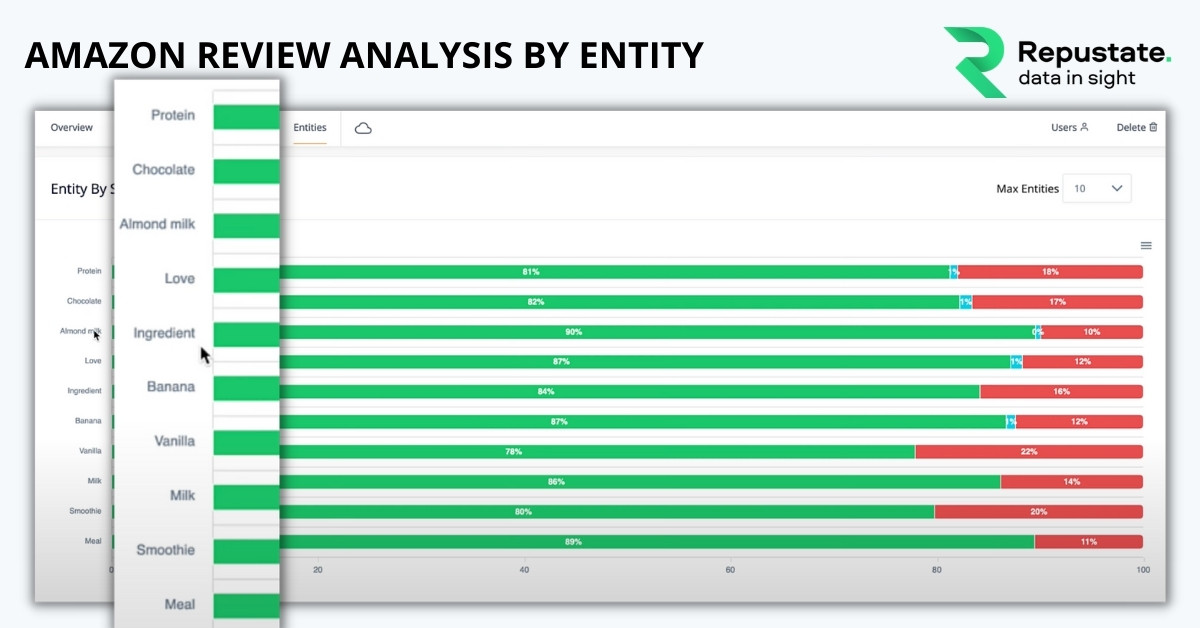
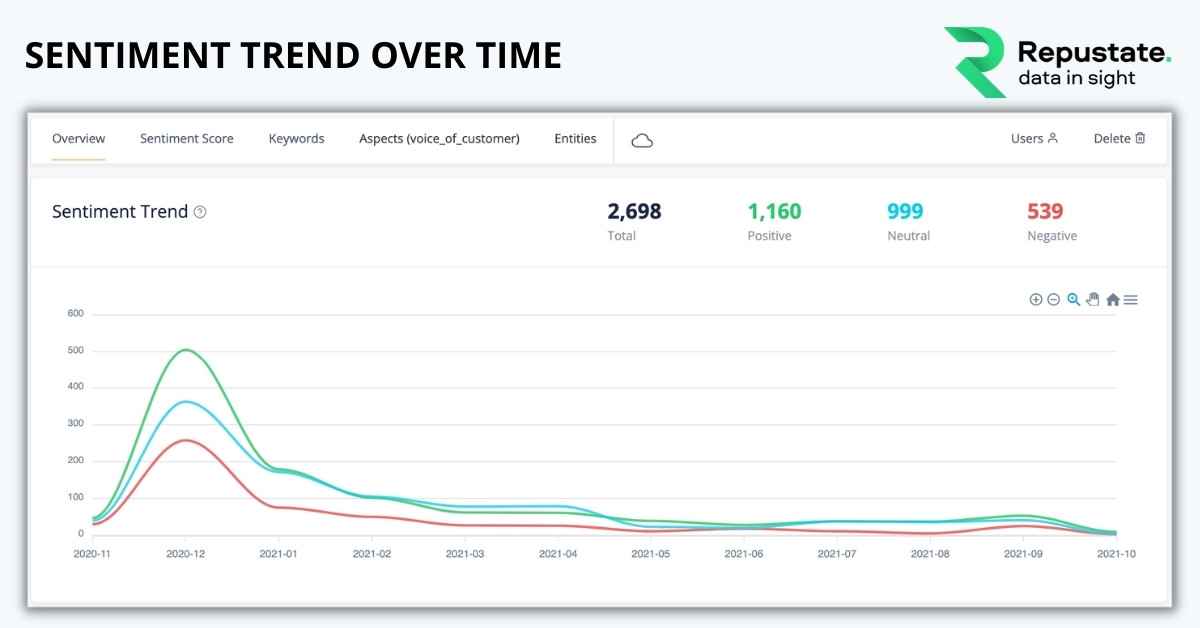
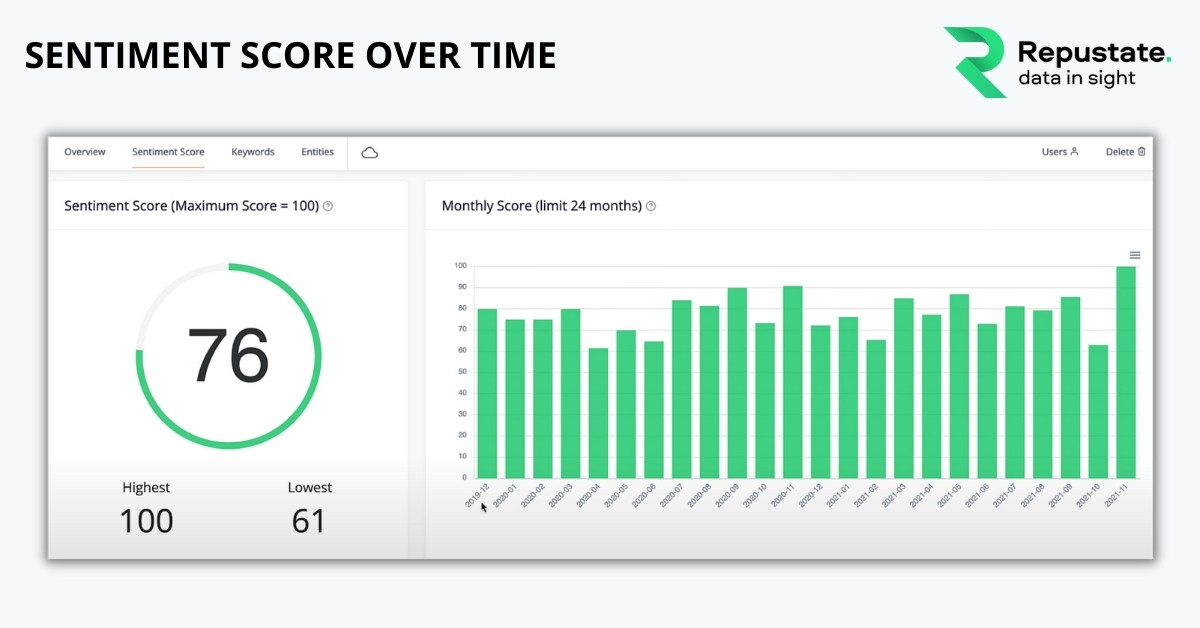
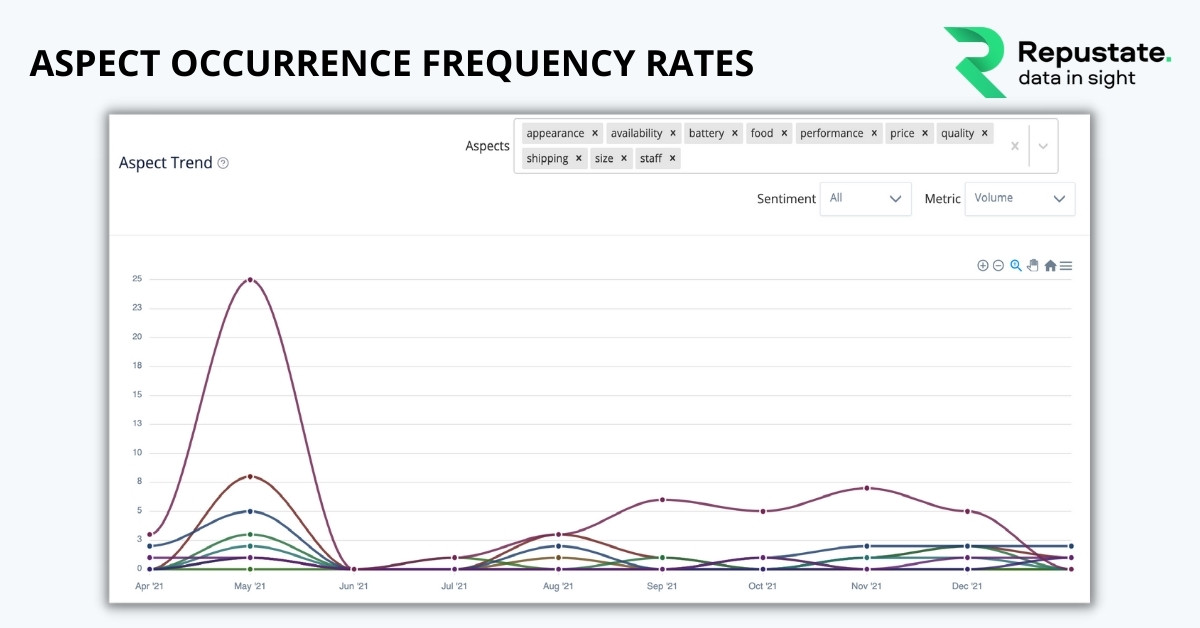
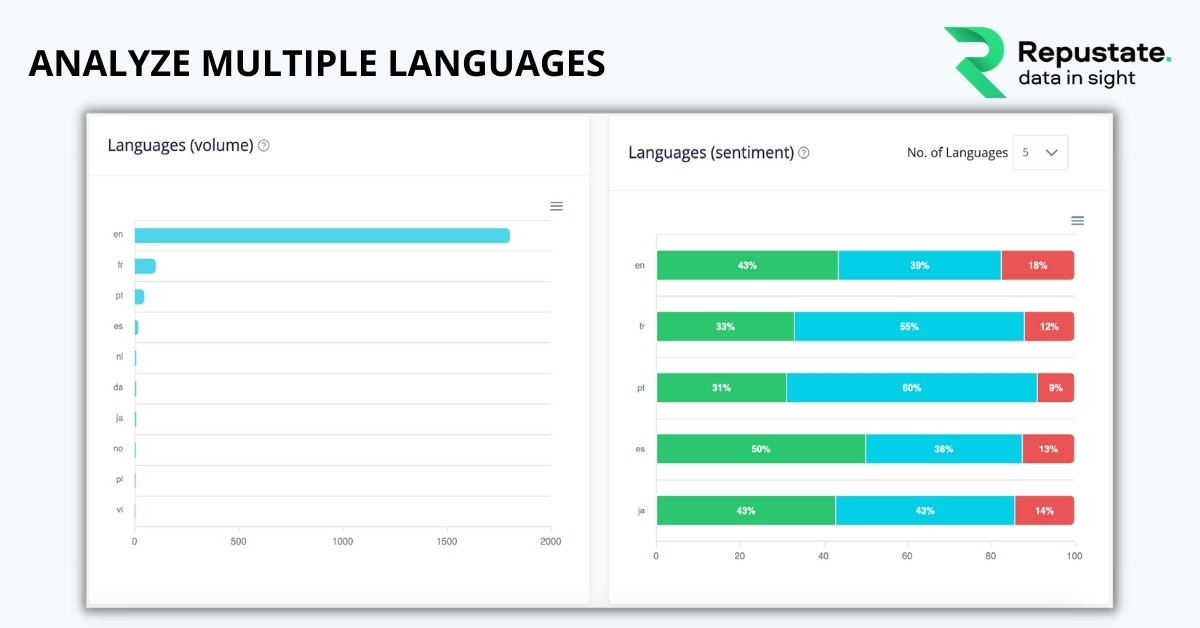
Watch the Video
What Is The Importance Of Amazon Reviews Data Analysis?
Amazon review data analysis is invaluable to brands because the reviews are written by actual users of the product, which means, what’s written is usually a first-hand experience. This data is a treasure trove for brands because people can be very vocal about their experience and give key information about the positives and negatives of a product, including its delivery and the customer service they received. This has also unfortunately lead to fake reviews spearheaded by companies. This is an unethical practice which shortchanges the public.
Another important reason is that even though a product may have received 4 stars (as the example we are going to analyze below will show), it doesn’t necessarily mean that the product was good. Digging deeper into the comments, many a time, shows that there are many negative points that the review mentions even though the person may have given a higher star rating. And vice versa.
For this reason, AI-powered Amazon review data analysis and social media listening is essential to understand and discover customer and product insights. A sentiment analysis API uses natural language processing (NLP) tasks to not only identify aspects of the products from the Amazon reviews but also enable brands to look beyond star ratings. This way it allows Amazon review analysis to help brands reach out to customers more effectively and engagingly, while giving rich product insights.
What Type Of Insights Can Be Derived From Amazon Review Data Analysis?
Brands can identify custom topics, discover market trends, see product issues, proactively manage brand reputation, analyze where they stand compared to competitors, and more through Amazon review analysis. Let’s look at more of these in detail.
1. Identify custom topics
Amazon review analysis can help brands identify topics, subtopics, and aspects for which there can be not only negative and positive feelings but also split emotions expressed. This is true in the case as seen in the example above, where even though people had given a high rating, there were many points they had written regarding the cons of the product.
2. Automatic topic grouping
NLP and sentiment analysis work together to extract topics while conducting Amazon review data analysis. These machine learning tasks then automatically group these topics into custom categories like convenience, sturdiness, easy-of-use, etc. Even if the format of the review is video-based, video content analysis treats it in the same manner as a text-based comment and analyzes it for topic classification. A platform like Repustate IQ can tell you which sentiments are occurring in relation to which topics, and can give an even more granular view through aspect-based analysis.
3. Sentiment analysis
Mining the emotions from reviews is what makes Amazon review analysis a more holistic approach than just numerical analysis. Qualitative data gives richer insights, because it tells you why something occurred or can inspire you into questioning why something is happening. When you are able to get to the bottom of an issue highlighted by people, it is easier to sort out the root of the problem.
4. Discover trends
Like the historical data in the video above showed, brands can discover many trends that would otherwise be hidden. In the example we analyzed, the trend showed that the product had dips in sentiment in Springtime across two years. This was intriguing because one would not have thought that a product like protein powder would have seasonal spikes.
5. Improve customer support
When you see what’s irking people about your product and the service they received, it’s easier to get to the root of those issues and set up a team to investigate the problem. You may even need to set up a better customer care management system to ensure consumers are not inconvenienced. Perhaps you would like to offer replacement services better, or refunds faster. There are many avenues you can explore with Amazon review analysis.
6. Identity issues
Perhaps you need better packaging, or a wider range of sizes for your product, or perhaps your website needs an overhaul to cater to customer emails better - there are a myriad of things you can address to make sure that your product keeps bringing customers in.
7. Manage brand reputation
It’s easier for companies to keep a tab on their online brand reputation with Amazon review data analysis. Even though some brands choose unethical ways to solve this problem through fake Amazon reviews, this is not a long term solution and actually very problematic for those companies that do it. Eventually, they lose customer support and confidence and are black-listed by consumers.
Sentiment analysis on reviews and comments gives you data-backed information about your brand’s perception in the market. It’s in a company’s best interest to heed to the feedback given by customers and actually do something about it. This will not only enhance your brand image but also drive customer loyalty.
8. Competitor intelligence
You can choose to analyze thousands of comments on Amazon about your product. But you can also do the same for your competing brands to see what people are saying about them. You can take that data and compare it with what consumers feel about you. Is there something you can do to make sure that you retain customers? Do you need to build a loyalty program? Do you need your products to be available in a variety of sizes and for different demographics? All these insights can be at your fingertips with Amazon review analysis.
9. Product enhancements
With all the insights you can gain through the analysis of your products on Amazon, you can surely get to see a trend that shows what product enhancements your customers are increasingly looking for. You can explore product off-shoots that are complimentary to your existing products, or you can decide to tie up with another company to ensure that your product is not overlooked because of an inconvenience. This is what Ikea did, and it’s bigger and better than before, despite a very tough competition.
10. Review metrics
Last but not least, Amazon review data analysis enables you to review your metrics and measure them based on time periods. You can choose to measure your metrics for a certain period of time and compare with a time span after a product enhancement has been implemented. And because these metrics are both numerical and qualitative, you get in-depth information about what you did right, and what course correction you need.
Why Do We Need AI For Amazon Review Analysis?
To extract meaningful information from any kind of data, ML algorithms need to be able to scan millions of data points. This becomes even more imperative in the case of user-generated content such as customer reviews, which can be highly varied in their structures. AI makes it possible to identify and extract insights from Amazon review analysis seamlessly because it also powers ML algorithms to analyze data at scale and remember data patterns and trends that appear in it.
Sentiment analysis is an intricate process where many ML tasks work methodically to understand and categorize data in order to pinpoint the exact customer sentiment. This happens in mainly three ways, which include diagnostic, predictive, and classifying neutral or ambiguous sentiment.
1. Diagnostic sentiment analysis
It helps in understanding what went wrong with a product or service based on negative or neutral sentiment. Natural language processing tasks and aspect-based sentiment analysis determine, extract, and measure the scale of negative or positive sentiment about each aspect.
These discoveries give marketing and product teams actionable insights they can use to improve a marketing campaign, better products, introduce innovation in their service or offerings, and so on. Thus Diagnostic Amazon review analysis can help companies to monitor changing customer sentiment patterns to see if their revamped strategies are working or not.
2. Predictive sentiment analysis
This is an AI-driven process whereby ML algorithms analyze historical data on that object/topic and forecast what customer sentiment will be in the future. This is very useful, especially to product teams because it allows them to refresh product and service offerings to maintain a stable return on investment. Eventually, it helps an organization become future-ready so there is stability in offerings and well as the bottom line.
3. Sentiment classification
It’s an AI-based data analysis technique that helps companies understand how relevant a comment or review is and if it matches other corresponding quantitative methods such as the star rating. This method is important because ratings are dependent on many subjective factors such as the time when the rating was given, the mood of the customer, their overall expectations, and so on.
That’s why it has been found on many occasions that the star rating may be higher than the actual positive sentiment expressed by the customer in the comments. And, vice versa. This kind of thorough Amazon review analysis is only possible with AI.
Conclusion
Insights from AI-driven Amazon sentiment analysis can be a game-changer for companies who want to investigate problems and strategize the best way to bring about improvements in customer experience and satisfaction. Through AI, companies can gather business intelligence about a range of functions such as how to increase productivity, improve market share, offer better customer service, and more. Importantly, Amazon reviews can also help brands transform their advertising campaigns for better outreach and effectiveness. In addition, Amazon review analysis can help brands keep a close eye on their online reputation so they can handle a product or service issue before it escalates.
 Home
Home
 Nov 4, 2021
Nov 4, 2021

 Jeremy Wemple
Jeremy Wemple
 Dr. Ayman Abdelazem
Dr. Ayman Abdelazem
 Dr. Salah Alnajem, PhD
Dr. Salah Alnajem, PhD
 David Allen
David Allen

 Repustate Team
Repustate Team

